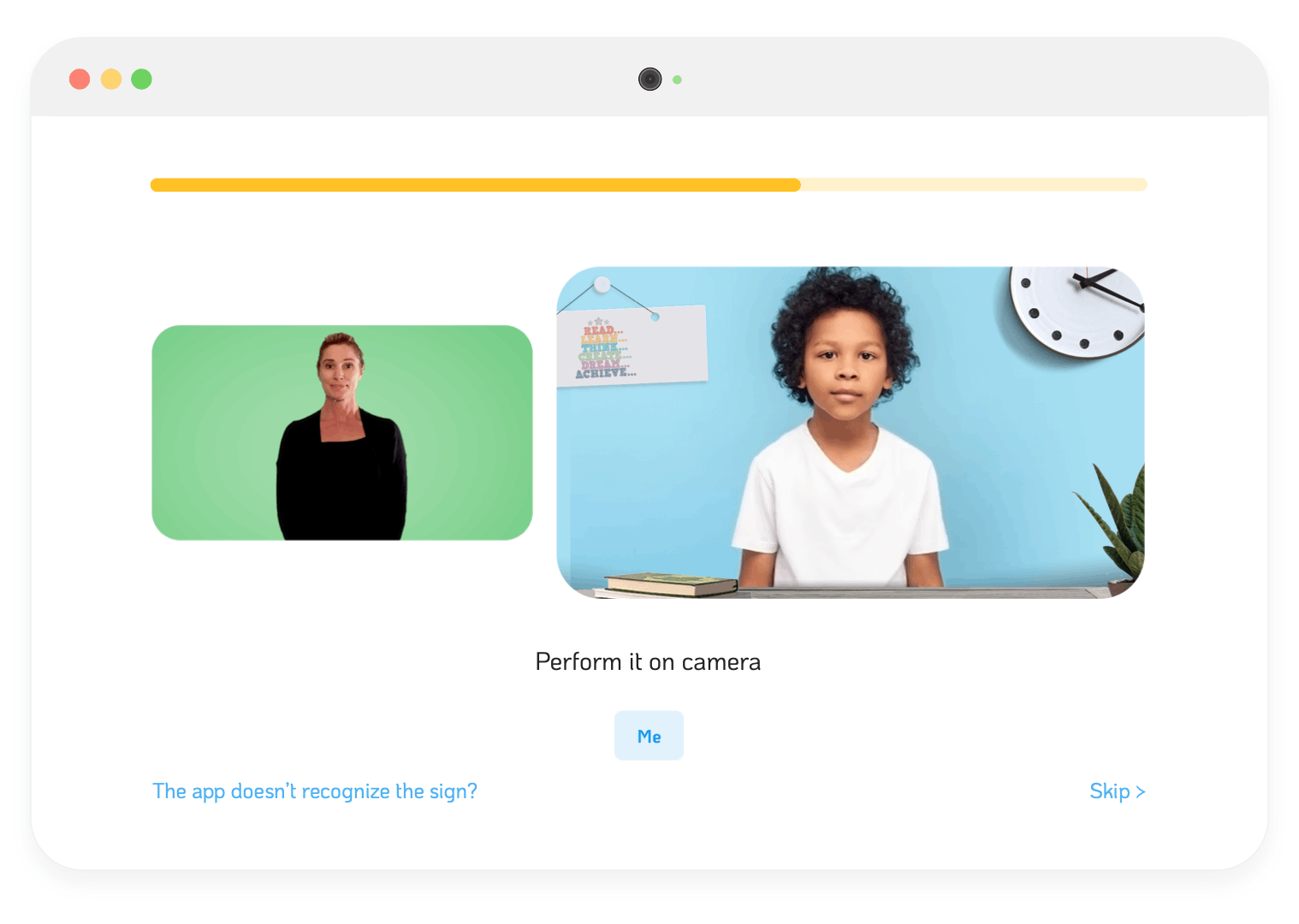Millions of people use sign language, but methods of teaching this complex and subtle skill haven’t evolved as quickly those for written and spoken languages. SLAIT School aims to change that with an interactive tutor powered by computer vision, letting aspiring ASL speakers practice at their own rate like in any other language learning app.
SLAIT started back in 2021 as the sign language AI translator (hence the name): a real-time video chat and translation tool that could recognize most common signs and help an ASL speaker communicate more easily with someone who doesn’t know the language. But early successes slowed as the team realized they needed more time, money, and data than they were likely to get.
“We got great results in the beginning, but after several attempts we realized that, right now, there just is not enough data to provide full language translation,” explained Evgeny Fomin, CEO and co-founder of SLAIT. “We had no opportunity for investment, no chance to find our supporters, because we were stuck without a product launch — we were in limbo. Capitalism… is hard.”
“But then we thought, what can we do with the tech we’ve got from R&D? We realized we needed to do an education solution, because for education our technology is definitely good enough,” he continued. Not that there are lower standards for people learning, but the fluidity and subtlety of fluent and mature sign language is orders of magnitude more difficult to capture and translate than one or two words at a time.
“We found an extremely talented guy who helped us develop a product, and we made SLAIT School. And now we have our first customers and some traction!”
Existing online sign language courses (here’s a solid list if you’re curious) are generally pretty traditional. You have lectures and demonstrations, vocabulary lists, illustrations, and if you pay for it online, you can have someone review your work over video. It’s high quality and much of it is free but it isn’t the kind of interactive experience people have come to expect from apps like Duolingo.
SLAIT School uses an updated version of the gesture recognition tech that powered the translator demo app to provide instant feedback on words and phrases. See it in video form, then try it until you get it. Currently it’s for desktop browsers only but the team is planning a mobile app as well.
“We have some room for improvement, but it’s exactly what we planned to deliver. Students can access the platform, do practice, make signs, interact with the AI tutor, and it costs them same as one hour with an in person tutor,” said Fomin. “The mobile apps we aim to do for free.”
Users can do the first few lessons in order to see that the system works, then it’s $39 monthly, $174 half-yearly, and $228 yearly. The price may seem high compared with large-scale language apps supported by capital and other business models, but Fomin emphasized this is a new and special category, and real-world tutors are their primary competition.

Image Credits: SLAIT School
“We actively communicate with users and try to find the best prices and economic model that makes subscription plans affordable. We would really like to make the platform free, but so far we have not found an opportunity for this yet. Because this is a very niche product… we just need to make a stable economic model that will work in general,” he said.
The traction is also a flywheel for the company’s tech and content. By collecting information (with express opt-in consent, which he says the community is quite happy to provide) they can expand and improve the curriculum, and continue to refine their gesture recognition engine.
“We see two directions for growing in,” Fomin said. “The first is to cover more language groups, like British sign language and Japanese sign language. Also we would like to make the curriculum more adaptive, or provide a curriculum for medical and scientific signs. If we have enough investment to grow and scale we can be a leading platform globally to automate talking to doctor in sign language.”
After that, he said, “Maybe we can finally develop a translator. We can break through this barrier!”
SLAIT pivots from translating sign language to AI-powered interactive lessons by Devin Coldewey originally published on TechCrunch















 English (US) ·
English (US) ·